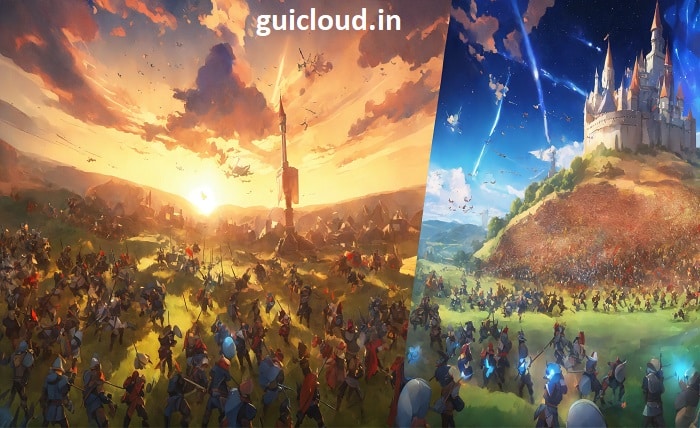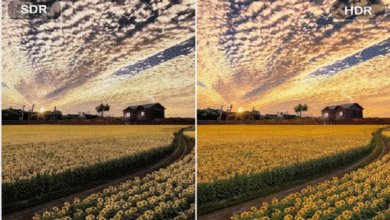iCloud vs Google Photos: Which is the Best Photo Storage Solution?

When it comes to storing and managing your photos, iCloud and Google Photos are two of the most popular options available. Both services offer a range of features to help you keep your memories safe and accessible. In this article, we will compare iCloud vs Google Photos to help you decide which is the best solution for your needs.
1. Introduction to iCloud and Google Photos
Understanding the basic functionalities of iCloud vs Google Photos is the first step in choosing the right photo storage solution. iCloud is a cloud storage service by Apple, integrated with iOS devices, offering seamless storage and syncing. Google Photos, developed by Google, provides a versatile platform for storing, organizing, and sharing photos across various devices.
2. Storage Options
When comparing iCloud vs Google Photos, storage options are a critical consideration. iCloud offers 5GB of free storage with paid plans ranging from 50GB to 2TB. Google Photos provides 15GB of free storage shared across Google services, with paid plans extending up to 30TB.
Read more about: sportsclips
3. Photo Quality and Compression
Photo quality is another crucial factor in the iCloud vs Google Photos debate. iCloud stores photos in their original quality without compression. Google Photos offers two options: “High Quality,” which compresses photos to save space, and “Original Quality,” which retains the original resolution and detail.
4. Compatibility and Integration
Considering compatibility is essential when evaluating iCloud vs Google Photos. iCloud is deeply integrated with Apple devices, offering seamless syncing across iPhones, iPads, and Macs. Google Photos, on the other hand, is compatible with both Android and iOS devices, providing broader accessibility.
5. Features and Functionality
Comparing the features and functionality of iCloud vs Google Photos reveals significant differences. iCloud offers features like shared albums, iCloud Photo Library, and Memories. Google Photos excels with advanced features such as automatic photo tagging, powerful search capabilities, and Google Lens integration.
6. User Interface and Experience
The user interface and experience play a vital role in the iCloud vs Google Photos comparison. iCloud provides a clean, simple interface familiar to Apple users. Google Photos offers a more dynamic and intuitive interface, with smart organization and easy access to tools and features.
7. Sharing and Collaboration
When it comes to sharing and collaboration, iCloud and Google Photos offer distinct approaches. iCloud allows sharing via shared albums and iCloud links. Google Photos excels with features like shared libraries, collaboration on albums, and easy sharing links, making it more versatile for group interactions.
8. Security and Privacy
Security and privacy are paramount in the iCloud vs Google Photos debate. iCloud uses end-to-end encryption to secure your data, ensuring that only you can access your photos. Google Photos also offers robust security measures, including encryption in transit and at rest, but privacy policies may differ due to Google’s data practices.
9. Pricing and Value
Pricing is a significant consideration when comparing iCloud vs Google Photos. iCloud’s plans range from $0.99 per month for 50GB to $9.99 per month for 2TB. Google Photos, part of Google One, offers plans starting at $1.99 per month for 100GB, with additional tiers up to $299.99 per month for 30TB. Evaluating the value each service provides relative to its cost is essential.
10. Choosing the Right Service for You
Choosing between iCloud and Google Photos ultimately depends on your needs and preferences. Consider factors such as the devices you use, the importance of photo quality, the need for advanced features, and your budget. Each service has its strengths, making them suitable for different users.
Conclusion
In the iCloud vs Google Photos comparison, both services offer robust photo storage solutions with unique features and benefits. iCloud is an excellent choice for Apple users seeking seamless integration and original photo quality. Google Photos provides broader compatibility, advanced features, and flexible sharing options. By understanding the differences between iCloud vs Google Photos, you can make an informed decision that best suits your photo storage needs.
FAQ
1. Can I use both iCloud and Google Photos simultaneously?
Yes, you can use both iCloud and Google Photos simultaneously to leverage the strengths of each service. This approach allows you to benefit from the seamless integration of iCloud with Apple devices and the advanced features of Google Photos.
2. How do iCloud and Google Photos handle video storage?
iCloud stores videos in their original quality, ensuring no loss in resolution. Google Photos offers the same options for videos as for photos: “High Quality,” which compresses videos, and “Original Quality,” which keeps the original resolution.
3. Which service offers better photo organization tools, iCloud or Google Photos?
Google Photos generally offers more advanced photo organization tools, such as automatic photo tagging, powerful search features, and smart album creation. iCloud provides basic organization tools like albums and shared albums.
4. Are there any notable differences in the pricing of iCloud vs Google Photos?
Yes, iCloud’s pricing starts at $0.99 per month for 50GB, while Google Photos, part of Google One, starts at $1.99 per month for 100GB. Google Photos offers more storage tiers, extending up to 30TB, while iCloud’s maximum is 2TB.
5. How do the privacy policies of iCloud and Google Photos compare?
iCloud uses end-to-end encryption for added security, ensuring that only you can access your photos. Google Photos also uses robust encryption but has different privacy policies due to Google’s data practices. It’s important to review each service’s privacy policy to understand how your data is handled.




